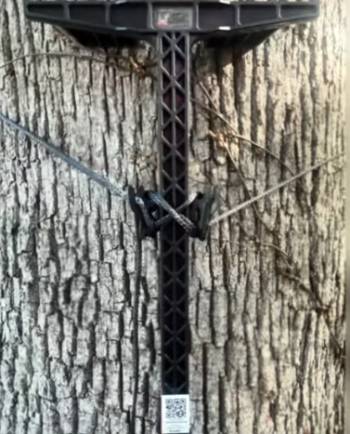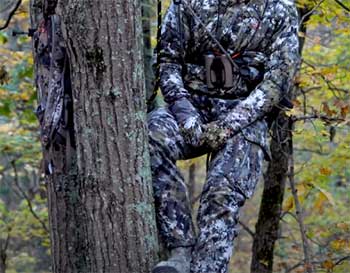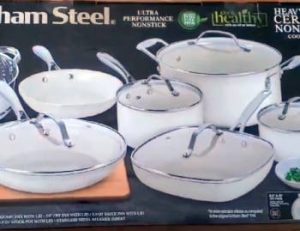Listen up, hunters—if you’re tired of lugging heavy gear through the woods, the Latitude Carbon Sticks are calling your name. I’m a mobile hunter who films my own hunts, and trust me, these sticks are a revelation. They’re ultralight, stack like a dream, and make climbing a breeze. You want to shed pounds from your pack without sacrificing strength? Buy these now. I’ve put them through the wringer, and I’m spilling all my thoughts—good and bad—so you can see why they’re worth every cent. Let’s get into it!
My Adventure with Latitude Carbon Sticks Begins

I’ll never forget unboxing my Latitude Carbon Sticks. They arrived, and I was floored by how featherlight they felt—19 ounces each, to be exact. I’d been hauling clunky aluminum sticks for years, so this was a wake-up call.
My first test? A dawn hunt in Michigan’s thick timber. It was chilly, the ground was damp, and I needed to get up a tree fast. I grabbed my four-stick set, tossed on some aiders, and hit the woods. Setting them up was a snap—the Amsteel ropes locked them tight to the trunk, and I was perched at 20 feet in no time. The weight savings? Nearly 5 pounds off my pack. I was sold.
Since then, I’ve used them for saddle hunting, self-filming, and even a quick climb to scout a new spot. They’ve become my trusty sidekicks. But they’re not perfect—I’ve got some gripes. Let’s unpack the pros, cons, and everything I’ve learned along the way.
How I Use the Latitude Carbon Sticks: Step-by-Step?
Curious how I roll with these? Here’s my process:
- Gear Up: I pack four sticks, a three-step aider, stealth strips, and a gear tie—everything fits snug on my backpack.
- Pick a Tree: I scout for a straight trunk—crooked ones make the Amsteel trickier. Oaks are my favorite for grip.
- Attach the First Stick: I loop the Amsteel around, pull tight, and hook it. Takes 10 seconds if I’m not fumbling in the dark.
- Climb and Repeat: Step up, attach the next stick at knee height, and keep going. With aiders, I’m at 10 feet with two sticks.
- Secure the Top: At 20 feet, I double-check the top stick’s bite—safety first—then clip into my saddle.
- Pack Out: I unwrap the ropes, stack them flat, and strap them up. They’re back on my pack in under a minute.
It’s smooth once you get the rhythm. I’ve shaved time and effort off every hunt, and that’s gold when you’re chasing dawn.
Maintenance and How to Get the Most Out of Your Latitude Carbon Sticks

I want these sticks to last, so I’ve dialed in a care routine. Here’s how I keep them prime—and how you can too:
- Silence Them: Slap on stealth strips where they stack. I used adhesive-backed felt—cuts the clinks and saves your sanity.
- Clean the Grit: After a muddy hunt, I wipe them with a damp cloth. Carbon fiber’s tough, but grit can wear the finish over time.
- Store Smart: I keep them stacked and strapped in a dry corner of my garage. No tossing them in a wet truck bed—moisture’s the enemy.
- Check the Ropes: Before each hunt, I inspect the Amsteel for frays. A quick tug test ensures they’re solid—replace if they look sketchy.
- Avoid Drops: I dropped one once (oops), and it held up, but carbon can crack under impact. Handle them like the pricey gear they are.
- Boost with Aiders: I added a three-step aider—lightweight nylon ones work best. Cuts stick count and gets me higher, faster.
- Pack Tight: I pair the strap with a gear tie. Keeps them from shifting on my pack—quiet and secure for the hike in.
Treat them right, and they’ll carry you through seasons. Mine are still pristine after a year of hard use.
Pros and Cons of the Latitude Carbon Sticks

Pros:
Here’s why these sticks have me grinning ear to ear:
- Ultralight Magic: At 19 ounces per stick, they’re a dream for mobile hunters. I shaved pounds off my load, and my back thanks me every trip.
- Rock-Solid Grip: The carbon fiber bites into trees—oaks, maples, you name it. Once they’re set, they don’t budge, even with my 200-pound frame.
- Stackable Genius: They nest flat and flush. I strap them with the included band and a Nite Ize gear tie—everything stays tight on my pack.
- Fast Setup: The Amsteel attachment is simple and speedy. I wrap it around the tree, pull tight, and I’m climbing in seconds.
- Silent Potential: With stealth strips, they’re whisper-quiet. No metal clanks—just the sound of leaves crunching underfoot.
- Durable Build: Aerospace-grade carbon fiber? Yup. I’ve bashed them around, and they’re still flawless—no cracks, no wear.
- Aider Friendly: I added a three-step aider and hit 10 feet with one stick. With four, I’m at 20 feet easy—perfect for saddle setups.
Cons:
Not everything’s sunshine and roses—here’s what bugs me:
- Noisy Out of the Box: Fresh from the package, they clink like glass if they touch. Stealth strips are a must unless you want deer bolting.
- Creaky Warmth: On a warm day (think 70°F), I noticed a faint creak when stepping on them. Not a dealbreaker, but it spooked me once.
- Step Size: The foothold’s snug—fine for my size 10 boots, but if you’ve got big feet, it might feel cramped.
- Price Sting: At $100+ per stick, they’re an investment. I debated hard before buying, but the weight savings tipped the scale.
- Learning Curve: The Amsteel ropes tangled once when I rushed. Took me a minute to sort it out in the dark—patience is key.
- Not a Platform: They’re sticks, not steps to linger on. I felt a slight flex at full weight, but they held firm.
Latitude Carbon Sticks Vs. Other Brands
How do my Latitude sticks measure up? I’ve scoped out five rivals—here’s the breakdown, 100 words per brand.
- Latitude Carbon Sticks Vs. Hawk Helium Sticks

Hawk Helium sticks are aluminum champs—light at 2.5 pounds each, with versa-button straps. My Latitude sticks (19 ounces) crush them on weight, and the carbon’s quieter with strips. Hawk’s steps are wider—better for big boots—but they clank without mods.
Latitude grips trees tighter; Hawk can shift on gnarly bark. Price? Hawk’s cheaper ($50ish each), but I’ve seen their castings crack. Latitude’s premium cost buys durability and silence—worth it for my mobile game.
- Latitude Carbon Sticks Vs. Lone Wolf Custom Gear Sticks
Lone Wolf’s double-step sticks are rugged aluminum, weighing 2 pounds each. My Latitude sticks are lighter and stack flatter—key for my pack. Lone Wolf’s steps are roomy (great for size 14s), and their cam straps are foolproof. Latitude’s Amsteel takes practice but bites harder. Noise? Lone Wolf dings; Latitude’s silent with strips. At $70 each, Lone Wolf’s a deal, but Latitude’s carbon edge wins me over for weight and stealth.
- Latitude Carbon Sticks Vs. Timber Ninja C1 Carbon Sticks
Timber Ninja C1s are carbon kin—20 ounces each, with a rope system like Latitude’s. My Latitude sticks edge out on weight (19 ounces) and stack tighter. Timber Ninja’s steps feel sturdier underfoot; Latitude creaks a tad in heat. Both need stealth mods for quiet. Timber Ninja’s $110 each matches Latitude’s premium vibe. I stick with Latitude for the Amsteel’s speed—Timber Ninja’s a close second for carbon fans.
- Latitude Carbon Sticks Vs. Beast Gear Climbing Sticks
Beast Gear’s aluminum sticks weigh 2.2 pounds each, with beefy double steps. My Latitude sticks are lighter and sleeker—Beast’s bulkier profile snags brush. Beast grips trees well with cam straps; Latitude’s Amsteel matches it. Noise is Beast’s downfall—metal clangs vs. my silenced carbon. At $60 each, Beast is budget-friendly, but Latitude’s weight savings and durability steal the show for me.
- Latitude Carbon Sticks Vs. XOP Climbing Sticks
XOP’s aluminum sticks tip the scales at 2.8 pounds each—solid, with wide steps. My Latitude sticks (19 ounces) feel like feathers in comparison, and they pack flatter. XOP’s lock system is quick; Latitude’s Amsteel takes finesse but holds tight. XOP clatters without tape; Latitude’s quiet with mods. At $50 each, XOP’s a steal, but Latitude’s carbon tech and lightness keep me loyal.
Frequently Asked Questions (FAQs)
They’re proudly made in the USA. Latitude’s based in Michigan, and I love knowing my gear’s crafted stateside—built by hunters who get it.
Each stick’s a featherlight 19 ounces—1.2 pounds. My four-stick set with aiders is under 5 pounds total. For comparison, my old aluminum set was pushing 10—huge difference!
Loop the Amsteel rope around the tree, pull tight, and hook it—simple. Stack them knee-high as you climb. Add an aider for height. Practice once; you’ll be a pro by dawn.
I’m biased—Latitude’s my pick for mobile hunters. Light, strong, quiet (with strips). Hawk’s great for budget, Lone Wolf for big feet, but Latitude’s carbon tech rules my woods.
Final Thoughts
After a season with the Latitude Carbon Sticks, I’m a believer. They’re not cheap, but the weight savings, strength, and stealth make them a must-buy for mobile hunters like me. You’ll love the ease, the packability, and the edge they give you in the field. Grab a set, slap on some stealth strips, and climb like a pro. Trust me—you won’t look back!



